Count in twos, threes, fives and tens

When you count, you usually count on in ones.
1, 2, 3, 4…
When you skip count, you count in other numbers, such as twos like this:
2, 4, 6, 8…
Skip counting is a useful skill if you need to count sets of objects, such as pairs of shoes, gloves, the wheels on a tricycle, or even money.
Counting on in twos, threes, fives and tens is easy, if you know your times tables.

Quiz: Counting in twos, threes, fives and tens
Test out your knowledge of counting on in twos, threes, fives and tens with this quiz, then read on to complete the page.
Counting in twos
When you count in twos, you could use a number line like this one.

You could also use a hundred square. Can you see a pattern?
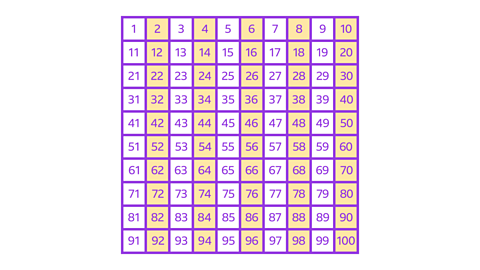
Each multiple of 2 in the hundred square has a difference of 2.
Counting in twos is useful if you need to count how many shoes you have in 10 pairs:

There are 20 shoes altogether.
Counting in tens
When you count in tens you could use a number line such as this.

You could also look at a hundred square. Do you see a pattern?
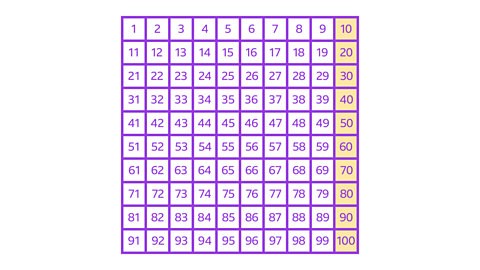
Each multiple of 10 in the grid has a difference of 10.
Counting in tens can be useful if you need to count objects that are in sets of 10.
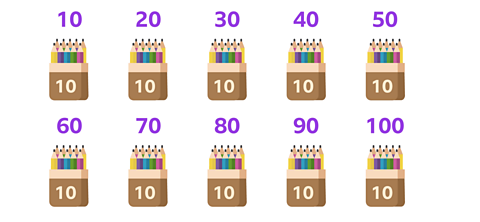
There are 100 pens altogether.
Counting in fives
When you count in fives you could use a number line such as this.

You could also look at a hundred square. Do you see a pattern?
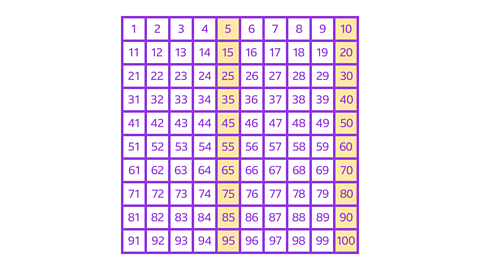
Each multiple of 5 in the grid has a difference of 5.
Counting in fives can be useful if you need to count objects that are in sets of 5, such as how many fingers are on each hand.
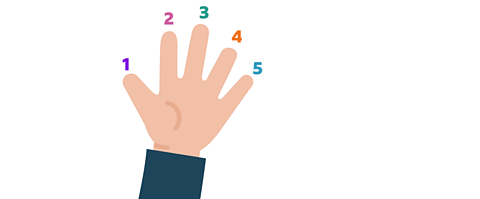
There are 5 fingers (including thumbs) on one hand.
Now look at this picture.
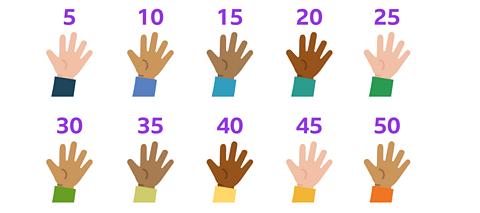
There are 50 fingers and thumbs altogether.
Counting in threes
When you count in threes you could use a number line such as this.

You could also look at a hundred square. Do you see a pattern?
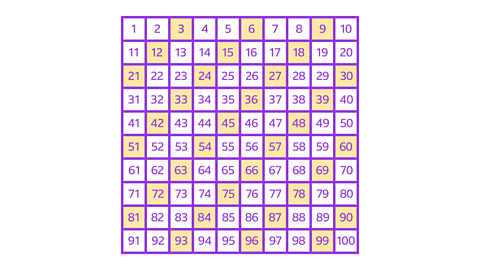
Each multiple of 3 in the grid has a difference of 3.
Counting in threes can be useful if you need to count the number of wheels on a group of tricycles.
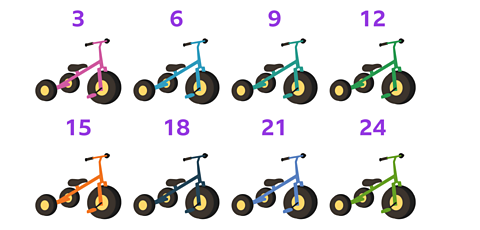
Example 1

Count in twos and work out how much money there is.
✓ The 2p coins add up to 14p

Example 2
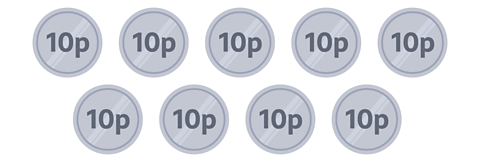
How much money can you see here?
✓ The 10p coins add up to 90p
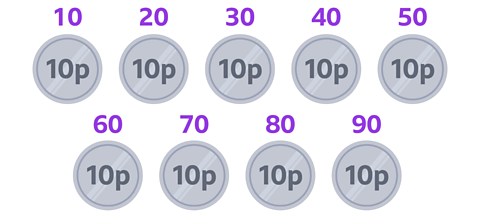
Example 3

How much money can you see above?
✓ The 5p coins add up to 45p

Example 4

Counting in threes, how many sides are there on these triangles.
✓ Altogether there are 18 sides.

Play Guardians: Defenders of Mathematica to get ready for SATs. gamePlay Guardians: Defenders of Mathematica to get ready for SATs.
In this game, use the times tables and more maths skills to defeat monsters and reclaim the Kingdom.

More on Multiplying and dividing
Find out more by working through a topic
- count4 of 34

- count5 of 34
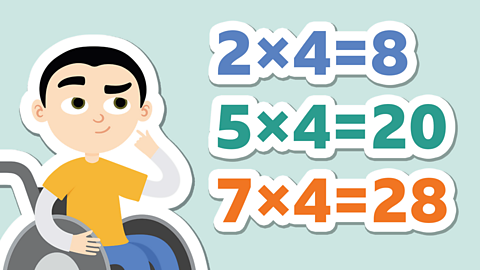
- count6 of 34
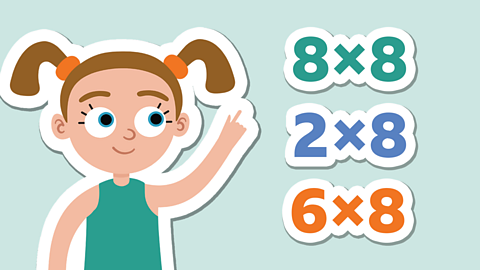
- count7 of 34
